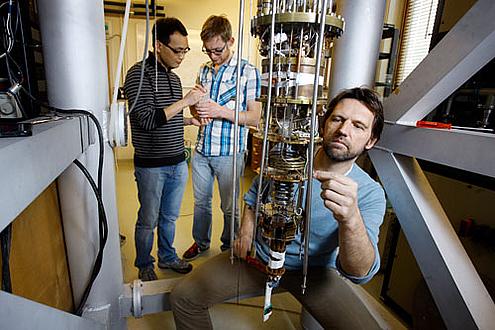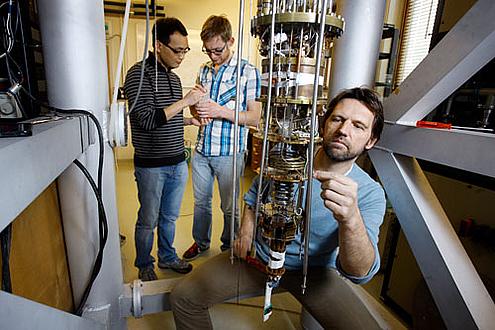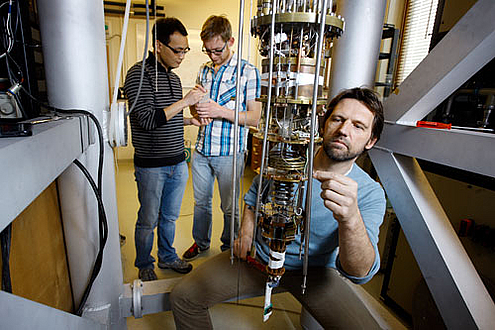Majorana Fermions Glimpsed in Cold Nanowires?
Majorana particles may have been detected for the first time since their theoretical existence was first proposed in the 1930s, with potential applications for quantum computing.

Leo Kouwenhoven and his team in the lab. Sam Rentmeester
|Updated:




